1542. Fuchs and The Most Beautiful Herbal Ever Written.

The Most Beautiful Herbal Ever Written.
Introducing Leonard Fuchs' herbal of 1542; the Historia Stirpum. In this magnificent and ground-breaking book, Fuchs produced what was clearly a labour of love in the form of the most beautifully and accurately illustrated herbal ever produced.
What made his herbal so outstanding was that each picture in his herbal was from an original woodcut based on the actual living plant. While today we would not expect illustrations to be based on anything else, in Fuchs’ time, this represented an incredibly unique effort and a marked break with tradition. Such was indeed his intention. In not allowing his craftsmen to ‘indulge their whims’, he desired to produce a book which would genuinely help people to identify the plants described. In many ways, his success in this is notable in that this was primarily a picture guide book to plants. The descriptions of the herbs and their uses was still based largely on classical sources,particularly Dioscorides, but annotated where possible with Fuchs’ own knowledge, though in practice this meant plants which grew near to where he lived in Germany.
Nevertheless, Fuchs’ book was a game changer. No one now could realistically produce books which did not properly illustrate the plants they were describing; at least not if they wished to be taken seriously. Renaissance botany would rest upon this work as its reference point. In practice, sadly, this meant that many subsequent books would simply copy Fuchs’ prints and reproduce them in their own pages. Even that though was an improvement to the dire state botanical illustration had sunk to for the last thousand years. Even more unusually, Fuchs actually gave credit to the artists involved in illustrating the work. Given that the absolute norm was to copy and copy and copy, this was so radical one wonders how it was perceived at the time. Fuchs must have been supremely confident in his belief in the value of his new herbal to have so clearly emphasised its contemporary nature, rather than relying on ‘ancient authority’ as was the more typical fashion.
Of Arum, Fuch says:
“Later physicians tell us the aron has the property of dispersing, reducing, and cleansing; therefore it heals swellings of the ears, piles, strumas and hard tumors, removes deformities of the face and skin. Lastly, they write that its root, reduced to a powder, diminishes the overgrowth of flesh in wounds. The very extreme bitterness to the taste that it asserts emphatically demonstrates that it can excel in this. Dioscorides too wrote that arisaron had considerable bitterness and so, rubbed on, reduced corroding sores and that a salve, very efficacious against ulcers, was made from it. He also says that its root, applied to the private parts of any animal, damages them. Pliny too has written that arisaron heals running sores, burns, and fistulas. He also says that mixed in an ointment, it curres running sores.”
For a great description of Fuchs’ book and work, take a jump to the Glasgow University Library write up of Leonard Fuchs
1526: The Grete Herball: a tendril of ancient herbal traditions reaching into 16th century England.
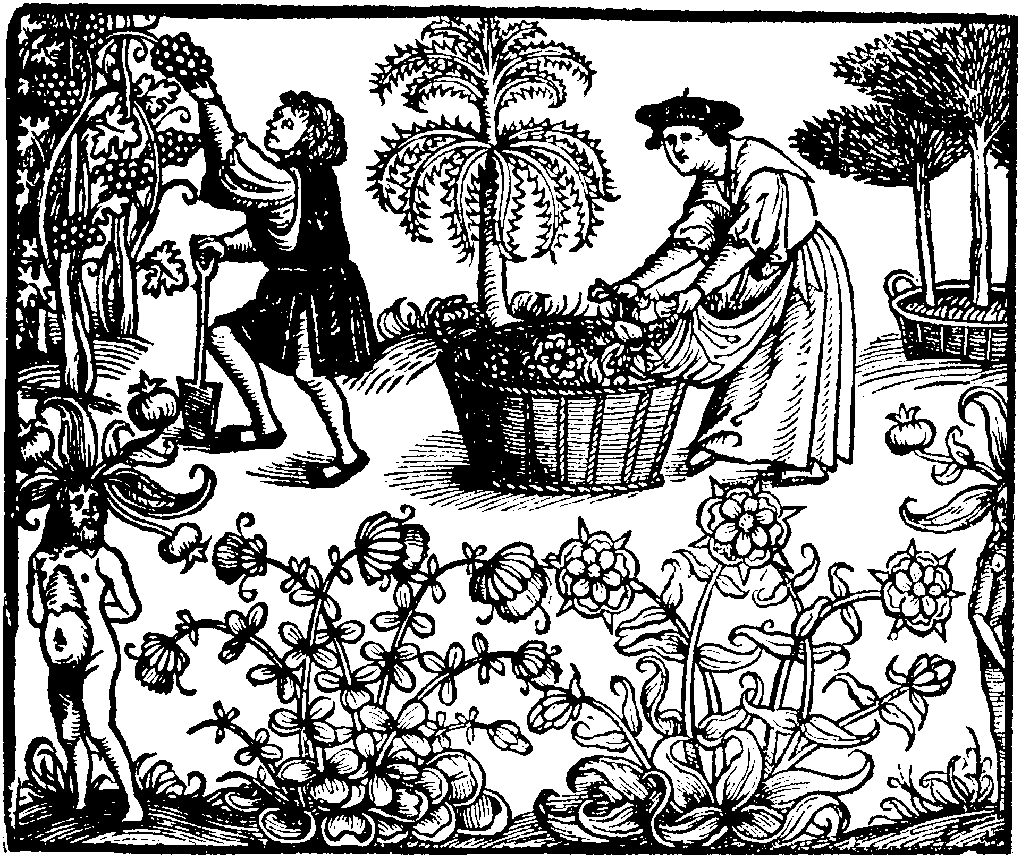
A Paper-Bound Time Machine.
Published initially in 1526 by Peter Treveris, the Grete Herball is a translation of a much earlier French herbal; Livre des Simple Medicines, which was already over one hundred years old when Peter Treveris translated it into English.
The French herbal was itself a translation of an even earlier work from the 12th century; Circa Instans, a work from the Salerno tradition combining Western (i.e. Greek)-based herbal lore with incoming Arabic herbal knowledge.
Circa Instans was written by an Italian medical practitioner, Matthaeus Platearius and is itself based largely upon a work called De Gradibus Simplicium. This work was written by a Tunisian doctor known as Constantine the African.
Based in the medical hotbed of Salerno in Italy, Constantine was a medical professor who translated many works of Arabic origin into Latin, which had a huge influence on subsequent medical practice and literature. Constantine’s De Gradibus Simplicium is an example of this, being itself a translation of a 10th century Arabic work, de Gradibus by a Tunisia-based Muslim physician known as Ibn Al Jazzar. This in turn, contained much herbal lore originally found in Dioscorides’ work.
Despite its date then, this is effectively a pre-medieval herbal brought back to life hundreds of years after its original time. It gives us a great insight into the language of Middle English botany in all its diasporic freedom.
Its description of Arum is in wonderfully archaic English.
‘It is called De Iaro. Cucko’we Pyntell, Arus. Calfs foot. It is hot and dry in the degree. It is also named aron. Some call it priestes hode. For it hath as it were a cape and a tug in it lyke a serpentyne of dragos, but serpentyne is longer. It groweth in moyst places and dry on hyis, under hedges and may be gathered in winter and somer.
‘It hath greate vertue in the leaves, but moe in its rote, but yet it hath more vertu in the knottes that be about the rote. It is gathered and clouden in middes and dyed.’
Arums Medical Uses.
The medical uses for Arum in the Grete Herball mostly mirror earlier works such as those of Dioscorides, but two are worth repeating.
For emozroydes [haemorrhoids]:
‘For emozrodes or pyles all evil of the fundiment, seeth this herbe and bathe y Paciet in the same to y navel, Dr bynde the herbes hote in a clothe and let him sit thereon.’
To bring on the menses:
‘To cause menstrues to flewe out the iuyce of this herbe into the conduyte with an instrument yzo pze for it oz medle it with the medecine called benet and than bled, oz with cotton wette therein and to minisstered.’
The First Illustrated Plant Guide in England (but not very good),
The Grete Herbal was also the first illustrated book on plants to be printed in England and contained 477 woodcuts. Unfortunately, this wasn’t as useful as it might sound. 70 of these were not actually of plants at all. Those that were, were often very poor copies of illustrations found in the earlier French, German and other early herbals and manuscripts on which this book was based. There are numerous discrepancies, some of which are pointed out by the printer, while elsewhere, the same illustration is used to identify a number of different species (albeit similar looking ones such as rice and wheat, though here is exactly where one would want accurate drawings). Useful illustrations are found for clover, rose, strawberry and water lilly. Just those ones for which pictures are probably not really needed.
The Same Book, evolving into a Different Book.
This stream of ideas found in this book, with its curious mixture of botany, myths, fables and factual herbal instruction, flows as a direct lineage from Dioscorides himself, meandering through the Arabic herbal traditions, whirlpooling back to Europe and finally disappearing in the Medieval period before resurfacing in the modern ages of the Elizabethan era.
Read more on the iPad book here: http://tinyurl.com/wildarumipad
1525: The most pirated book of the 16th Century (and no, it’s not the bible).
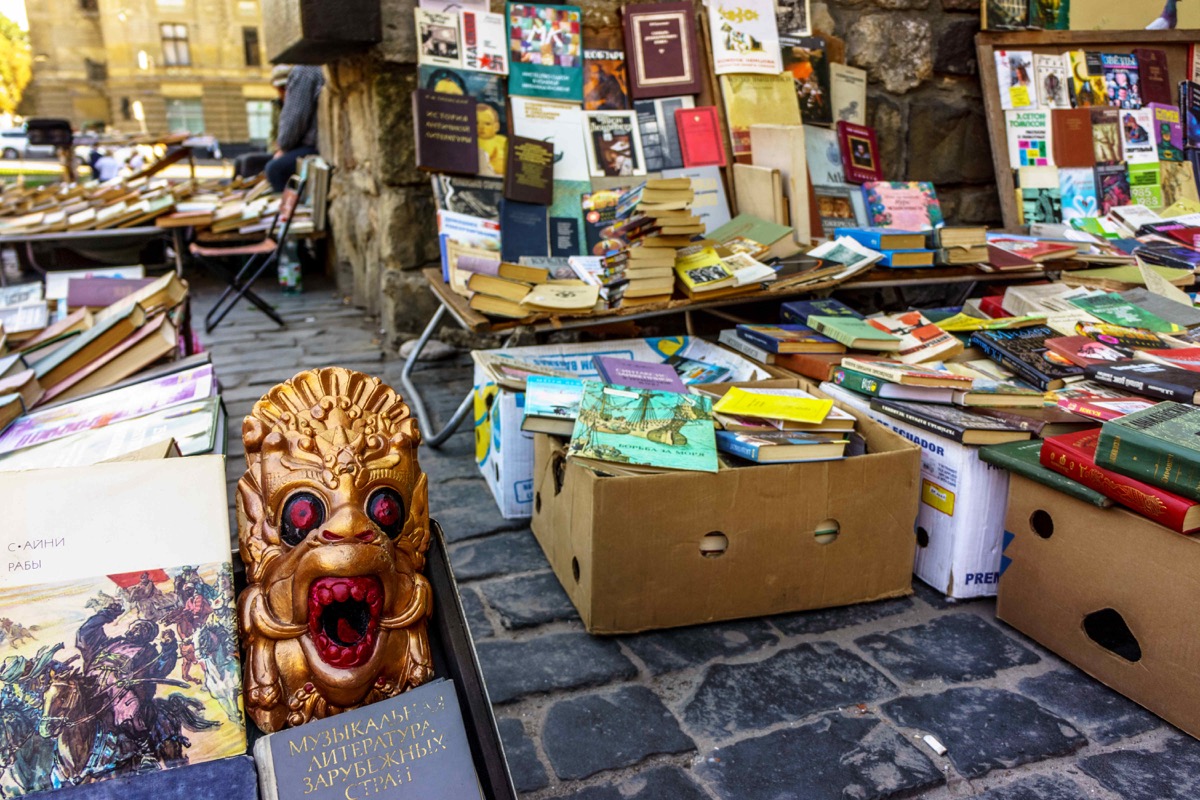
Book pirating really began in earnest in the 1400’s, once the invention of the printing press made the tedium of hand copying manuscripts unnecessary. What a great boon to unscrupulous book publishers that was.
In every field of literature the relative ease of printing meant that existing manuscripts along with bright-new works could suddenly be mass produced, expanding the accessibility to knowledge to more and more people. The new masters of the art: the printmakers, were quick to realise its potential.
The First Printed Herbals.
The first herbals produced with this new technology were often simply printed reproductions of works which had already been in existence in manuscript form for hundreds of years. They are known collectively as the ‘Incunabula Herbals’, incunabula meaning ‘wrapped in swaddling clothes’, and so rather lovingly referring to works produced in the first 50 years of the printing press: the newborn books.The sudden ability to reproduce these ancient manuscripts, effectively en masse, was to turn the status quo of the previous two thousand years on its head. For the first time people were able to produce a copy of say, Dioscorides’ great work, effectively on demand, in as many copies as desired, in relatively no time at all (compared with how long it would take a scribe to copy out the entire manuscript afresh) and without having to pay a scribe for his time either. It must have seemed incredible, dangerous and exciting all at once. These were heady times for the printers and they lost no time in letting it go to their heads.
New writers were also quick to get in on the act, though all was not rosy for such early authors. Just as early manuscripts were copied by hand from manuscript to manuscript, the printing press only amplified this time-honoured means of reproduction. Within months of a popular work being printed, copies were produced by other print houses and they seldom gave any credit for their original sources. Many writers and publishers would produce so-called ‘new’ works which were predominantly reworkings of existing publications or even just translations of works in other languages, producing a rolling tumbleweed of copying, mis-translations, half-truths, garbled medicinal information and, with few exceptions, illustrations of a steadily deteriorating quality. Plagiarism was the name of the day and the copying of others’ work clearly has a very long precedent indeed.
Bankes’ Herbal, the first herbal to be printed in England.
One particularly unfortunate victim of this was the Richard Bankes, author of his very popular and high-quality eponymous herbal published in London in 1525. Seemingly an original work – or at least based on an otherwise medieval source manuscript – it ends with the words ‘Imprynted by me Rycharde Banckes, dwellynge in London, a lytel fro ye Stockes in ye Pultry’. It was the first herbal published in England and contained useful botanical information on the plants and their medicinal properties and often gave a greater amount of factual information than many other existing and more famous herbals. It also must rank as one of the most pirated books of the 16th century.Over the next 25 years an impressive number of different editions of Richard Bankes’ work were produced. Unfortunately not one of them was by Richard Bankes. These copies were issued by other print houses and, to disguise their provenance, they were given different titles and ascribed to different authors. Sometimes they even claimed to be works by classical writers from Ancient Greece or the personal practice notes of eminent doctors. Once inside the covers however, they were simply copies of poor old Richard Bankes’ herbal.
Read more on the iPad book here: http://tinyurl.com/wildarumipad
(above image: Lviv book market. The statue is of Ivan Fedorov; the bringer of printing technology to Lviv.)
1500s: The Elizabethan Ruff, Manicured Beards and Arum Starch #2
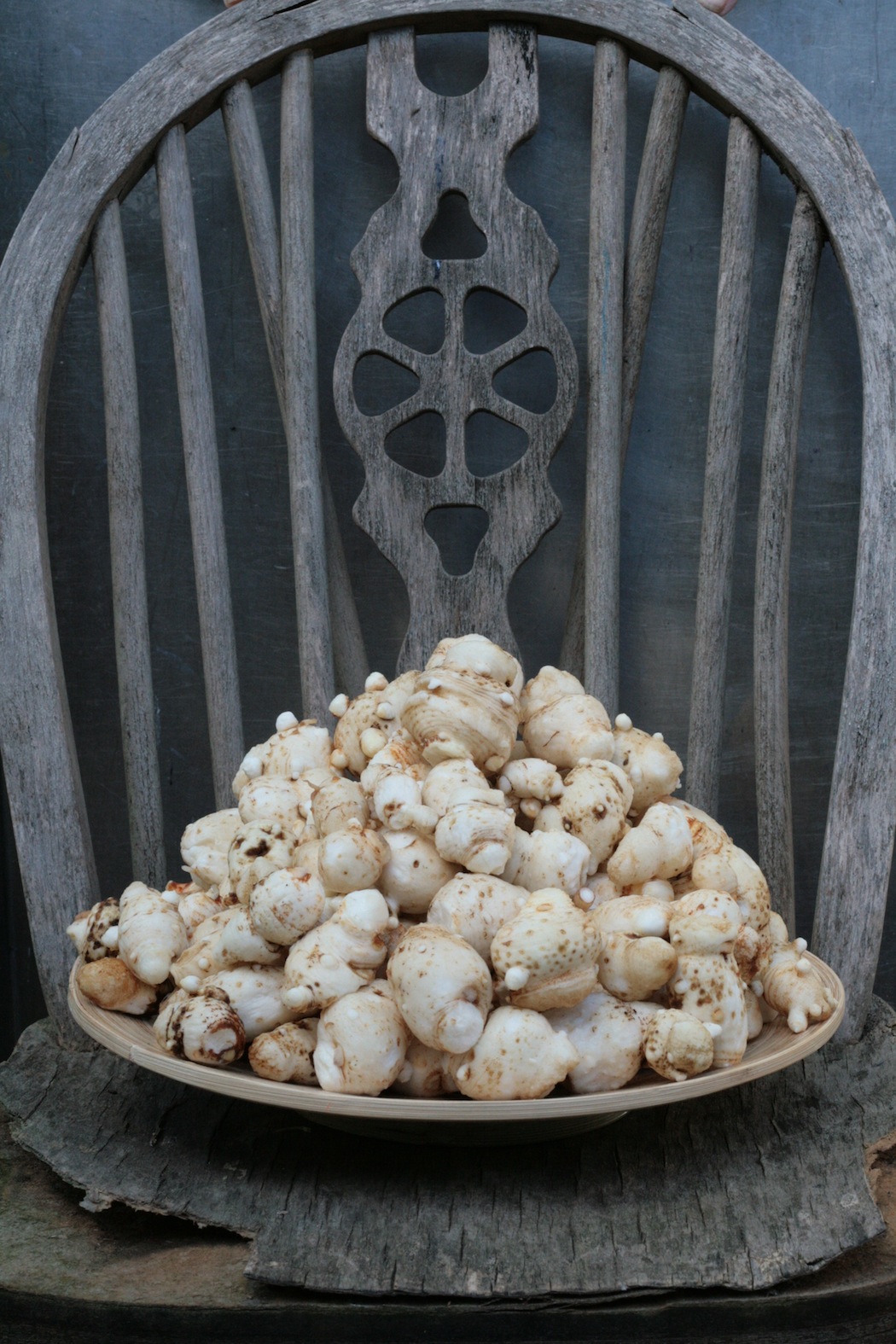
Part 2: Starching Your Beard, Slovenly Solicitors and the Elizabethan Mr Angry.
Beard Starching.
Beard starching. Never done it? The Elizabeth era was the prime time for men to display their creativity in beard shaping, a somewhat neglected manicure amongst the gentlemen of today. A man wishing to sculpt his beard into a suitably fashionable and attractive shape had to take into account a number of considerations. Firstly there were the Elizabethan class dictates, so that where he lived and what profession he held played an important role in how his beard might be manipulated. Such important social signals were not to be overlooked. That decided, he was then free to enter the constantly changing fashion race of sculpting his beard into different angles, shapes, cuts, coils and contortions.
‘having starched their beards most curiously...’
To ensure such facial architecture would remain in place, men would stiffen their beards with starch. Now, there is a persistent rumour that it was specifically Arum starch that was used for this. The source of this is usually Cecil Prime, who refers to a preface by Thomas Nashe in Robert Greene’s Menaphon of 1589. The actual sentence is this:
‘Sufficeth them to bodge up a blank verse with ifs and ands, and otherwhile, for recreation after their candle-stuff, having starched their beards most curiously, to make a peripatetical path into the inner parts of the City, and spend two or three hours in turning over French dowdy, where they attract more infection in one minute than they can do eloquence all days of their life by conversing with any authors of like argument’.
A life of reckless debauchery
Robert Green was, along with Marlowe, one of the most established playwrights and dramatist of the time, and was known for writing very popular love tales (the Elizabethan equivalent of Mills and Boon romance) and for living a life of reckless debauchery and continual criticism of others around him – so much so that even he confessed that he was ‘unable to keep a friend’. There was a notable contrast between his life and the dreamy, happy romantic world of his writings, but he was acknowledged as a genuinely talented writer and his works were undeniably popular. Menaphon in particular was the most accomplished of his ‘romance’ novels.
Thomas Nashe, on the other hand, was relatively unknown at the time but was part of a contemporary circle of London-based writers known as the University Wits (a group of which both Greene and Marlowe were members). A Cambridge graduate, he has been described as a ‘journalist born out of time ... with a brilliant and picturesque style’. He wrote with a fierce satire of the figures and society around him. His preface to Greene’s Menaphon gave him his big break and he used it to put down Greene’s critics and ridicule other writers of the contemporary scene. In the quotation above, he is actually referring to lawyers who leave the legal profession to become writers, saying that they will kill even the best writing stone dead. He then goes on to say how they starch their beards before heading into town to sleep with prostitutes and return with venereal diseases. This gives a good idea of Nash’s style, both in his writing and his approach to life. Some have said that this was a coded reference to the young Shakespeare (particularly as Greene himself had given Shakespeare a hard time on occasion). However, we know little of Shakespeare’s early life and there is no evidence of him having worked as a lawyer previous to his life as a playwright.
Despite the wealth of information about and by Nashe, he does not explicitly state anywhere that it was specifically Arum that was used as a beard stiffener. We can only assume that it was, given its popularity and penetration into the lives of Elizabethans at that time and their fascination with exploring the limits of its stiffening properties.
As an aside, such was the zeitgeist of Arum’s starch-stiffening fame that at one time, according to Boyce, a relative of Arum (alpinium) was used in Scandinavia specifically to stiffen clerical collars. As a result, he says, it can often still be found growing around old church sites.
The Elizabethan 'Mr Angry'.
We have already read (in the last post) that objections were raised about the use of Arum starch in ruffs because of its affect on the laundry maids' hands. Some took a dislike to ruffs themselves because they believed that such items were the direct work of the devil. A now infamous pamphlet was distributed at the time by a puritan Christian called Philip Stubbes. It makes for amusing reading; he was the original ‘Mr Angry’ of every local newspaper letters page. In his pamphlet he gives his views on everything that annoys him, with ruffs singled out for special treatment. ‘The devil, in the fullness of his malice invested these ruffes’ he said, before going on the describe this new-fangled substance they call starch (another invention of the devil): ‘The one anchor piller wherby his kingdome of great ruffes is underpropped, is a certaine kinde of liquide matter which they call Starch, wherin the devill hath willed them to wash and dive his ruffes wel, which when they be dry, wil then stand stiffe and inflexible about their necks’. That was just the preamble. Ruffs (amongst many other things) really did get Mr Stubbes worked up into quite a stiff lather: ‘Ruffs that go flip-flap in the wind, and lie on men’s shoulders like the dish-clout of a slut’. And so it went on.
Oh Arum – in trouble again. The devil’s plant, indeed. Philip Stubbes need not have worried. By the end of the Elizabethan era and the new reign of James I, the use of Arum – along with the giant ruffs it had once supported – shrunk and diminished into the realms of history. Laundry maids across the country sighed with relief and Arum was largely forgotten.
Read more on the iPad book here: http://tinyurl.com/wildarumipad
Above photograph by Fergus Drennan. More of his Arum food photographs can be seen in the book and his work with wild foods can be viewed at fergustheforager.co.uk
1500s: The Elizabethan Ruff, Manicured Beards and Arum Starch #1
Part 1: How Arum made 5ft wide Elizabethan Ruffs possible.
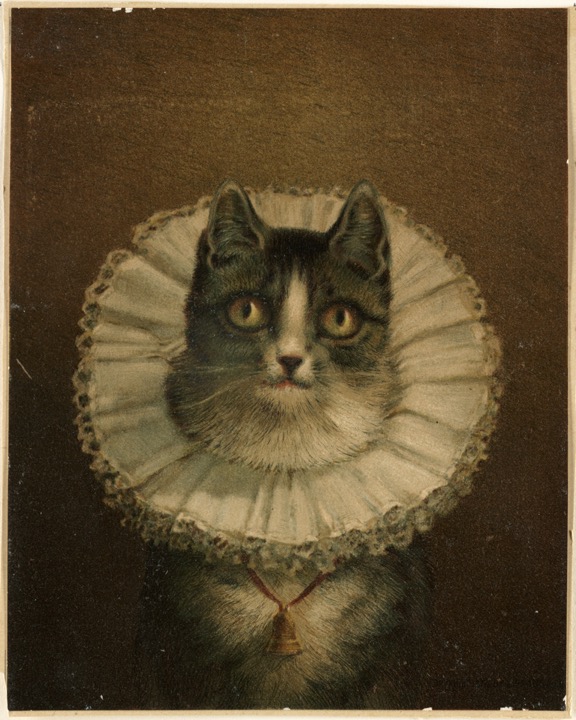
image: wikimedia.org http://bit.ly/196qHVa
The Elizabethan era was to fashion what the Precambrian era was to evolution: a time when a whole variety of strange forms came into being, had their fun and then promptly died out, leaving only those more practical designs to pass on down the ages. Ruffs are the trilobites of fashion: in their day widespread and successful, today well known and generally much loved by current generations. They are the ‘type fashion’ of the era and, like trilobites, completely extinct.
The ruff evolved from the ruffle. The word and the garment, hand in hand defining the fashion of an era. Ruffles appeared early in the 13th century, as simple strips of crimped trimming added to sheets as a decoration. Fittingly, the word originates from the Germanic ruffelen, meaning ‘crumpled’. By the 15th century, ruffles were used around the neckline of items of clothing such as chemises, those smock-like precursors to modern-day shirts originally worn by women. They served the distinctly practical purpose of saving a wearer’s ‘shirt’ or top clothing from becoming soiled around the neckline (think how modern shirt collars suffer). Being detachable items they could be washed separately, thus avoiding the need to launder a whole smock or shirt. Very sensible, those Tudors.
With the quickening of the Elizabethan era, ruffles left their utilitarian roots behind them. Hearing the call of destiny, they became ever more ornate and distinctly non-utilitarian items of fashion and status. Bedecked with jewels and arranged into tiers, ruffs (as they were now called), sported varied shapes, numerous styles and a range of colours, all peculiar to the wearer’s class and gender. Such were the dictates of Elizabethan society on class and clothing that the yellows, reds and purples favoured by the upper classes is said to have given rise over time to the ‘Lords and Ladies’ name for Arum.
The most extreme ruffs grew to become over a foot (25 cm) wide: supported by internal frames to bear their weight. Such constructions could often comprise over 15 feet (5 m) of cloth. Cecil Prime describes how bearers of such ruffs could hardly walk or bend whilst wearing them. At one point it was clearly felt to be getting out of hand and Queen Elizabeth banned such extra-wide ruffs. All jolly good fun no doubt, but such experiments in fashion were made possible only by a single discovery – Arum starch.
We do not know how or when, but at some point it was realised that Arum was not only a source of starch but that it produced such a very fine-grained and white starch that it was on a par with that derived from rice and wheat and, indeed, from arrowroot itself. Arum quickly became prized for its suitability for laundry starching, giving a strong and stiff structure to the cloth. So pronounced were its stiffening qualities that, combined with the newly imported Dutch starching techniques, anything seemed possible. People began experimenting. Ruffles seemed a good place to start: thus was born the ruff. The fashion designers of Elizabethan times embraced Arum wholeheartedly and it is no exaggeration to say that it is Arum that made the whole wonderfully outlandish extravagance of Elizabethan ruffs possible.
Demand for Arum was considerable for a time, but its super-starch strength came with a significant cost due to its effect on people’s skin – not the skin of the lords and ladies, but the skin of their washerwomen. Unlike rice or wheat, Arum contains the incessantly irritant calcium oxalate crystals. These needle-shaped crystals are of such tiny size that they penetrate into the very pores of the skin whereupon they cause intense itching, chapping and blistering. They are equally damaging whether one is handling the leaves or the roots, and Arum starch soon became renowned for causing severe and painful blistering to the hands of the laundry maids who made it. Gerard stated, ‘It choppeth, blistereth and maketh the hands (of the poor launderesses), rough and rugged and withall smarting’.
In part 2: Starching Your Beard, Slovenly Solicitors and the original Elizabethan Mr Angry.
Read more on the iPad book here: http://tinyurl.com/wildarumipad
c.1500: Arum maculatum given its first official name of Arum officinarum by Matthaeus Lobelius.
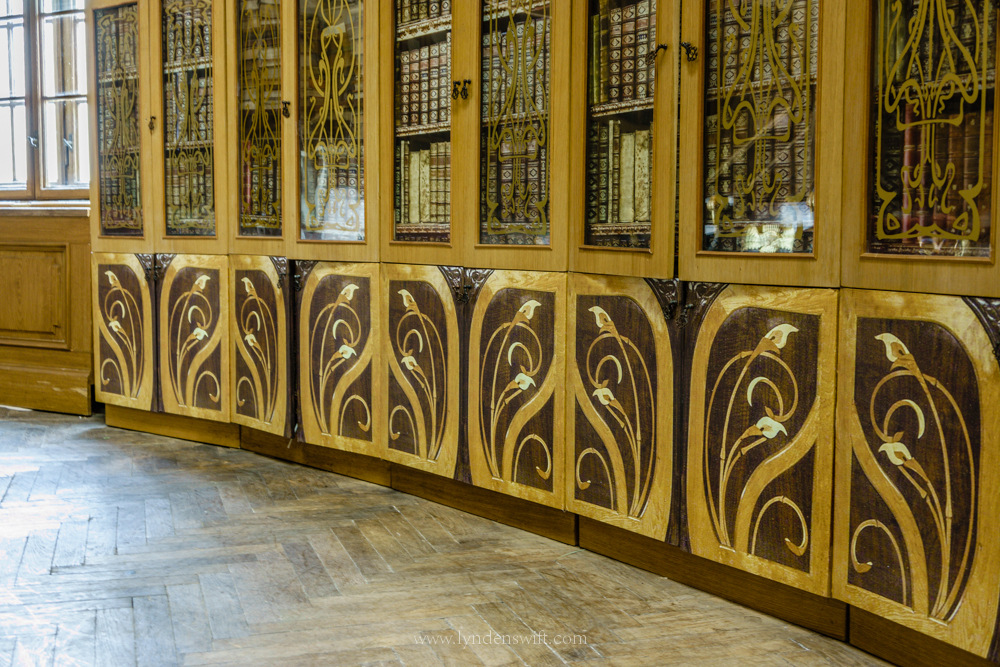
The botanical name Arum maculatum first appears as far back as 1588, when Tabernaemontanus used it in his great herbal: the Neuwe Kreuterbuch, the illustrations of which went on to be used in Gerard’s herbal of 1597. At that time, the name was used in a fairly loose fashion and didn’t necessarily refer specifically to our modern Arum maculatum.
The plant was more commonly known, when it was specifically named at all, as Arum officinarum – or at least it was so called by Matthaeus Lobelius, the French botanist who began the first concerted attempt at botanical classification during the 1500s. In reality, the name didn’t stick, but it does tell us that it was already the ‘type plant’ for the arum genera: the reference or starting point to which all other varieties were compared. The name and the plant as we know them did not come together until 1753, when Linnaeus formally named the plant as such in his famous Species Plantarum, which defined the format for scientific classification that is still used today.
Read more on the iPad book here: http://tinyurl.com/wildarumipad
1495–1505: The Unicorn Tapestries produced. Arum depicted in the sixth tapestry.
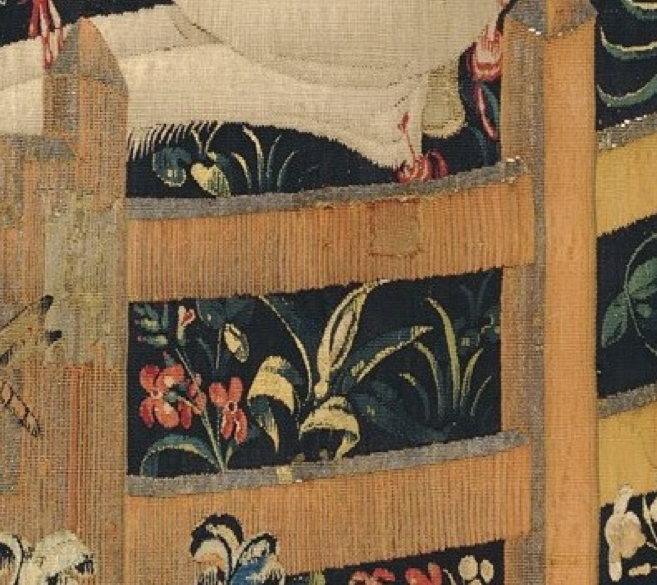
Quite possibly the most beautiful example of Arum appearing in art and one where Arum is depicted accurately as well as artistically, is in the last of the so-called ‘Unicorn Tapestries’. This series of seven tapestries represents one of the pinnacles of medieval art, each hanging measuring just under 4 x 3 metres, woven in wool and silk with silver and gold threads. Created between 1495 and 1505 in Brussels or the Netherlands, it is still a mystery why and for whom they were made or even whether they were originally intended to be hung together at all. It is known that for centuries they were in the possession of a French family by the name of La Rochefoucauld, who hung them in their family home in Bordeaux. In 1789, amidst the chaos of the French Revolution their chateau was ransacked and the tapestries stolen.
The family returned to their chateau in 1855 and made it known around the locality that they wanted the tapestries back and would pay for their return. No questions asked, presumably. Astonishingly, all of the tapestries were still in the hands of families of local farmers and the Rochefoucaulds regained possession of their wonderful hangings. Even more remarkably, it turned out that these incredible tapestries, at this point some 350 years old, had been used by the local farmers like old rags; for protecting piles of potatoes in barns and wrapping around fruit trees in spring to protect them from frost. For 65 years. Despite such unintended and seemingly abusive activities, the tapestries were still in good condition and generally had not suffered undue harm. The family hung them in their home once more until 1922, when they sold them to John Rockefeller for $1 million. After enjoying them in private for 15 years, he donated the tapestries to their current home.
The tapestries are today displayed in the Metropolitan Museum of Art (in New York) and depict the hunting and killing of a unicorn by a group of noblemen. The sixth tapestry shows the unicorn as dead; killed by the noblemen and brought back to the castle for the lord and lady. In keeping with Arum’s symbolic powers, however, the seventh and final tapestry depicts the unicorn as alive and well, seemingly resurrected but now contained by a fence and chained. It is, however, a very low fence and the chain is very loose; the implication being that if it wished to escape, it could do so. Many plants are depicted within the fence with the unicorn and Arum is one of these, very visible, in full fertile glory, beside the resting unicorn.
This particular tapestry (and Arum) also makes an appearance in the film Harry Potter and the Half-blood Prince, where it is seen covering the wall outside the ‘Room of Requirement’ with the character Malthoy standing before it. It is also glimpsed against the walls in various Harry Potter ‘house’ common rooms. A high-resolution image of the seventh tapestry depicting Arum can be seen on the Metropolitan Museum’s website at http://bit.ly/17ts7tu. The image above is a screen shot of a zoomed in portion, showing the Arum within the fence.
The main page for the museum’s section on the tapestry is here: http://bit.ly/OYQh6b
Read more on the iPad book here: http://tinyurl.com/wildarumipad
Arum names as seen by the web #12: Brown Dragons
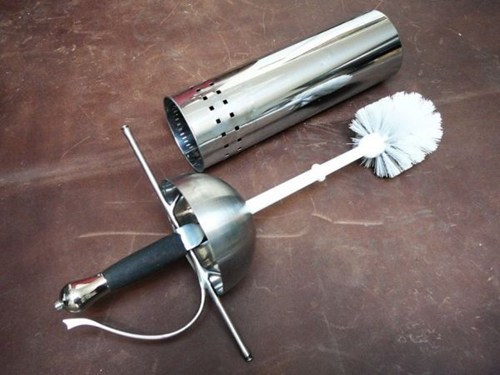
Read more on the iPad book here: http://tinyurl.com/wildarumipad
First Herbal with Original Pictures for 1000 Years.
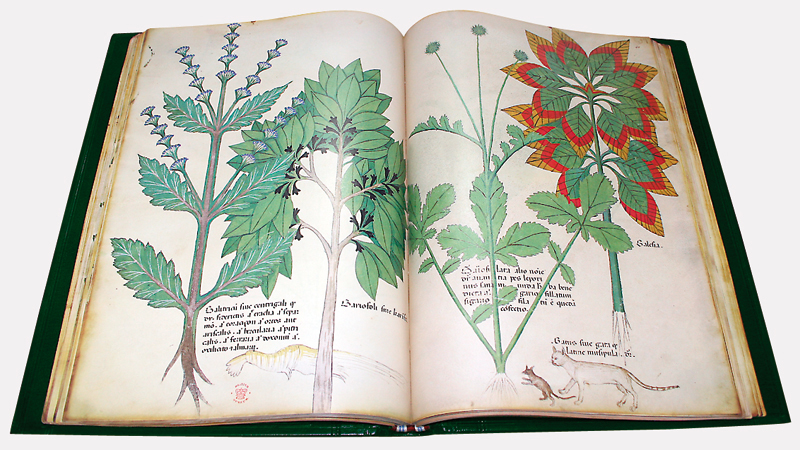
1440: The Tractatus de Herbis is published.
Until the 15th C , with its invention of the printing press and the subsequent explosion of Elizabethan era herbals, there were basically two main herbals (at least, illustrated ones) doing the rounds in the ancient world: Dioscorides’ Materia Medica, which was the main body of work in both the Greek and Arabic traditions and, in the West at least, the Herbarius of Apuleius Platonicus, which was produced somewhere around the 3rd - 4th C. These were the ‘big guns’ on any respectable herbalist’s bookshelf even though one was essentially a copy of the other, along with pretty much every other herbal available. Then along came the Tractatus de Herbis.
There is a single significant reason why this manuscript is considered to be such a remarkable herbal: its illustrations. To understand why, let's backtrack a little. Back to ancient Greece, back to before even the great Dioscorides produced his magnificent work. Back to around 350 BCE. The time of Aristotle, Plato and Theophrastus.
This was the time when the very earliest herbals that we know about were produced. None of them have survived and today we know about them only through references in later works. They are thus evocatively known as 'ghost works'. One thing that we do know is that they were illustrated and their illustrations were incorporated (i.e. copied), into the great herbals that do survive; Dioscorides’ work being the main example. What was remarkable about them is that these illustrations were based on observations of the actual plants themselves. Amazing eh?
The bizarre thing is that once these pictures had been produced, common consensus seemed to be that that was that; job done. The same illustrations were then just copied from manuscript to manuscript down the ages - for almost a thousand years. Not surprisingly, many became so derivative that the plants they were supposed to be illustrating were completely unrecognisable. That nobody really minded this is evidenced by the fact that every now and again, someone thought that the, by now highly abstract and botanically useless, pictures were so beautiful they would make a nice book just on their own without all of that distracting writing and herbal lore.
It was not until the 14thC (a thousand years after the original illustrations), that someone thought that perhaps it might be a good idea when writing a herbal to put in illustrations which were not 1000 year old copies of copies of copies but instead were pictures of the actual plants, so that a person might be able to use the pictures to identify the plants. Thus was born the ‘Tractatus de Herbis’.
It is a beautifully illustrated book specifically designed to show the different plants used in medicine as accurately as possible so that practitioners of different nationalities, languages and reading skills could properly identify the right plant.
This was clearly a far too new-fangled idea because it did not really catch on for another two hundred years, when the production of modern herbals and the development of a more ‘modern’ botanical-medical attitude was in full swing. The pictures from this herbal did however get copied themselves and made into yet another picture book; without any of text to get in the way.
It now resides in the British Library.
A number of images can be seen here
Read more on the iPad book here: http://tinyurl.com/wildarumipad
Free copies of Wild Arum on the ipad available.
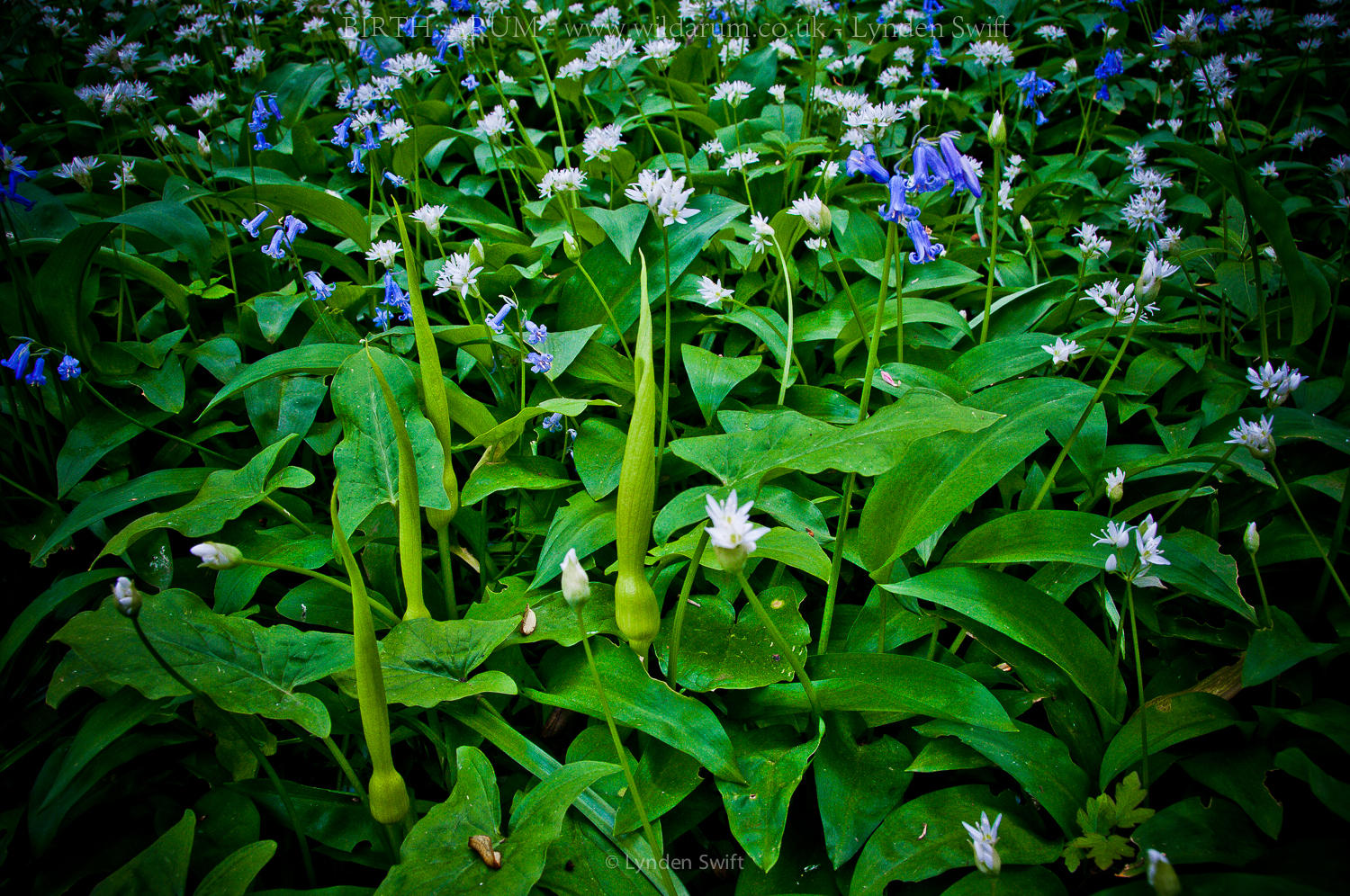
I have 20 copies of the ipad version of the book available to give away as review copies, to anyone who would like the chance to read the book and view all of the photographs (which do look amazing on the ipad), in return for writing a review on either the itunes store or Amazon.
If you want to have a copy of the book and write up a review of it, drop me an email (lynden@wildarum.co.uk) with either 'iTunes review' or 'Amazon review' in the subject line. First 10 for either I will send a code out to.
Look forward to hearing from you all!
Lynden